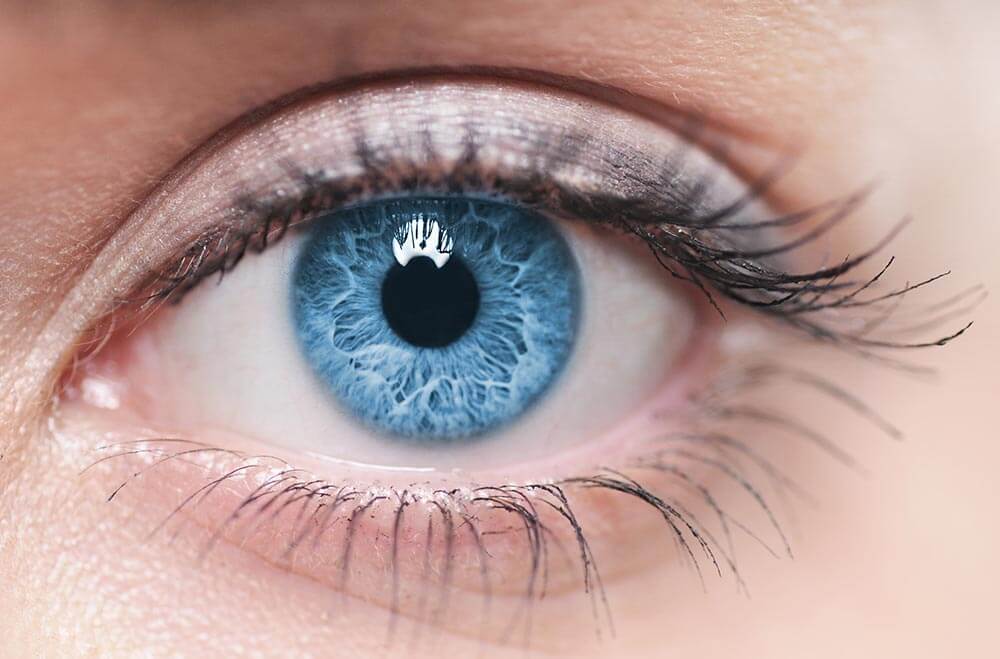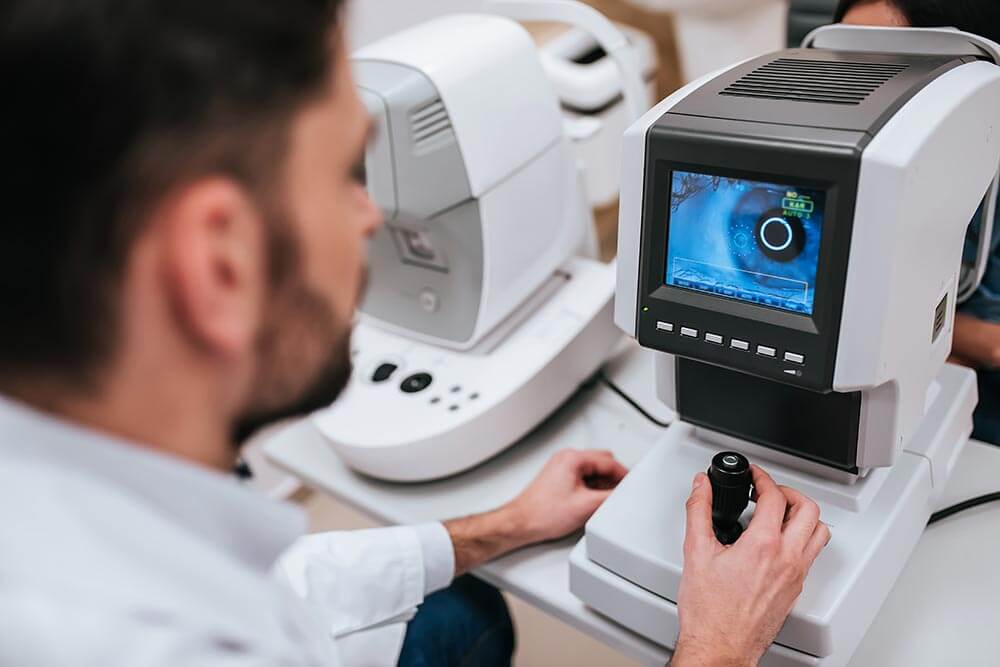
The retina is the light-sensitive tissue that lines the inside of the eye. It transmits light to the brain via the optic nerve. The macula is the functional center of the retina. It gives us the ability to see straight ahead, see small print and appreciate colors.


Many retinal diseases share common symptoms and treatments, but each has unique characteristics. The goal of retinal disease treatments is to stop or slow disease progression and preserve, improve or restore vision.
Age-related macular degeneration (AMD) is a troubling disease and is usually found in individuals over the age of 50. In most cases, the disease affects both eyes and progresses very slowly. Visual symptoms of AMD involve loss of central vision, affecting activities such as reading, driving and watching TV. It is important to point out that macular degeneration does not lead to blindness because peripheral vision is unaffected.
Ninety percent of patients have the so-called dry form of macular degeneration. This form is slowly
progressive and patients rarely suffer from severe vision loss. There is often little that needs or can
be done.
Fewer than 10 percent of all patients develop the wet form of macular degeneration. With the latter form,
abnormal “leaky” vessels grow between the layers of the retina. Substantial loss of central (e.g.
reading) vision maybe lost in a few weeks to months.
Branch retinal artery occlusion (BRAO) occurs when retinal arteries have become blocked by, among other things, fat deposits or a blood clot. There is a greater risk of BRAO if there has been any hardening of the arteries in the eye. Sometimes the blockage is caused by a clot carried by the blood from another part of the patient’s body. BRAO can be treated in a variety of ways to bring blood flow back to the eye. This includes ocular massage, re-breathing carbon dioxide and other methods to increase blood flow.
Someone suffering from BRVO will suffer a loss of central vision if the retinal veins blocked are those that nourish, or help to nourish, the macula. The macula is the part of the retina that’s responsible for central vision, so if those veins are blocked, often straight-ahead vision is lost. About 60% of people who suffer from this condition will also suffer central macular vision area swelling. This edema (swelling) will last for about a year in about a third of those people.
People with central retinal artery occlusion (CRAO) can usually see movements and shapes, but little detail. Over time and with proper treatment, 5 to 10% of patients will recover some vision that is useful to them. However, most patients will recover some side vision, but not central vision. Thrombosis is the most likely cause of CRAO; thrombosis is the formation of an abnormal blood clot. The CRAO effectively blocks the main artery to the retina, the light-sensitive nerve layer in the eye. People suffering from a CRAO experience a painless, but sudden loss of vision.
Although hypertension and diabetes increase the chance of developing a CRVO, most eyes that sustain a CRVO are healthy. Although the exact mechanism is not clear, the main retinal vein gets choked as it enters the eye via the optic nerve. Most patients experience sudden, painless loss of vision. Others may experience loss of vision over a period of weeks. Unfortunately, the loss of vision is permanent. Regular visits with your eye doctor are encouraged to prevent neovascular glaucoma from developing. This rare, painful type of glaucoma can be seen in several settings, but commonly is associated with central retinal vein occlusions. It can be prevented if diagnosed early.
Diabetic retinopathy is a major cause of new blindness in adults. If discovered in time, most cases of vision loss caused by diabetic retinopathy can be prevented. Any adult with diabetes should have their vision checked at least once a year. People with diabetes who are vigilant about having their vision checked regularly can often avoid or prevent vision loss from diabetes.
Panretinal photocoagulation, or PRP (also called scatter laser treatment), is used to treat proliferative diabetic retinopathy (PDR). The goal is to create 1,600 - 2,000 burns in the retina with the hope of reducing the retina's oxygen demand. In treating advanced diabetic retinopathy, the burns are used to destroy the abnormal blood vessels that form in the retina. This has been shown to reduce the risk of severe vision loss for eyes at risk by 50%.
A retinal detachment is a very serious problem that almost always causes blindness unless treated. The appearance of flashing lights, floating objects, or a gray curtain, veil or shadow moving across your field of vision are all indications of a retinal detachment.
Vitreous hemorrhages may cause loss of vision by physical blockage of light. Light cannot be "seen" by the retina. Causes include a tear in the retina, certain vascular abnormalities or conditions such as diabetes. A vitrectomy (removal of the vitreous) can restore vision and is a common procedure for many retinal disorders.